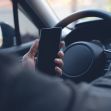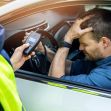Statistics Show the Number of Cellphone-related Car Accidents Nationwide Continues to Rise, Despite Laws to the Contrary
Last year and late to the game, Texas became the 47th state in the country to ban texting while driving. (Now, only Arizona and Montana have no ban, while Missouri prohibits text messaging by drivers 21 years and younger.) In Texas, you can still use your phone to talk hands-free, play music, operate a GPS, report a crime, or seek emergency help, but any form of written communication (outside of an emergency) is against the law. Anyone who violates the Texas ban gets a ticket and faces a misdemeanor charge, as well as a fine between $25 and $99, and up to $200 for repeat offenders. Anyone convicted of texting and driving who causes serious injury or death to others faces a fine of up to $4,000 and one year in jail.
But are texting and driving bans working to help prevent car accidents?
Despite laws prohibiting texting and driving and numerous public interest campaigns underscoring the risk, many statistics show a steady rise in cellphone use and cellphone-related car accidents. Regarding the effects of texting bans, observation surveys of drivers conducted before and after texting bans in New York and Southern California found that texting rates, in fact, increased after the bans. However, surveys weren’t conducted in jurisdictions without texting bans, so it’s unclear whether rates were different than would have been expected without the bans.
Equally alarming, a national survey of drivers found no significant association between frequency of texting and state texting bans. For example, among 18 to 24-year-olds, 45% reported texting while driving in states with all-driver texting bans, only 3% less than the number of drivers who reported texting in states without bans. When the Highway Loss Data Institute conducted separate analyses of insurance collision claims in four states before and after all-driver texting became effective, relative to claim rates in neighboring states with no bans, three states had significant modest increases in collision claim rates after the bans took effect, and one state had essentially no change in claim rates.
Only time and crash data will tell if texting bans are working
Strong, well-enforced traffic laws have been highly effective in reducing some risky driving behaviors, such as drunk driving and failing to wear a seatbelt; however, at this time, based on the data available, it’s not clear whether laws prohibiting drivers’ cellphone use are having the same effect. According to the Texas Department of Transportation, distracted driving and cellphone use continues to be a problem in Texas, notwithstanding the new law. Currently, one in five crashes involve distracted driving, a ratio that has not changed in the last three years.






